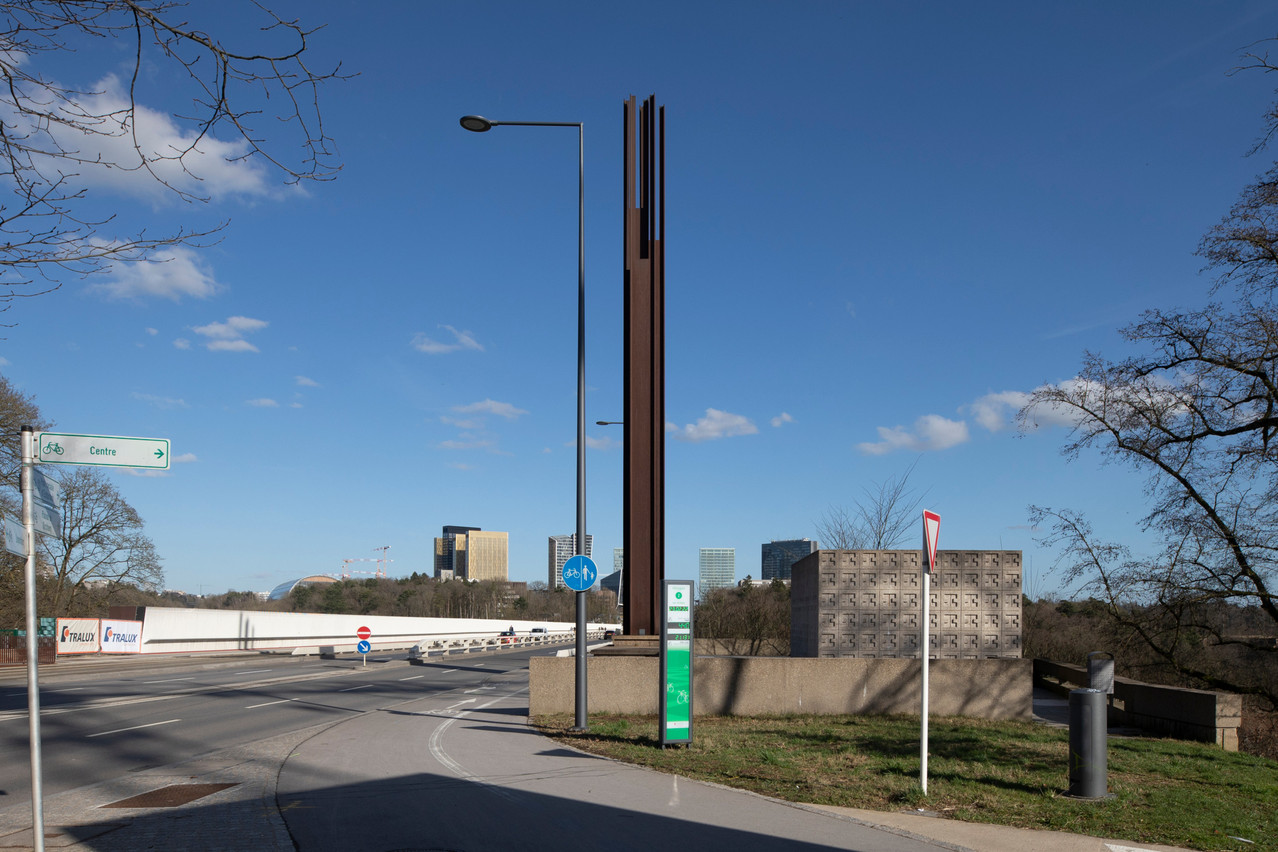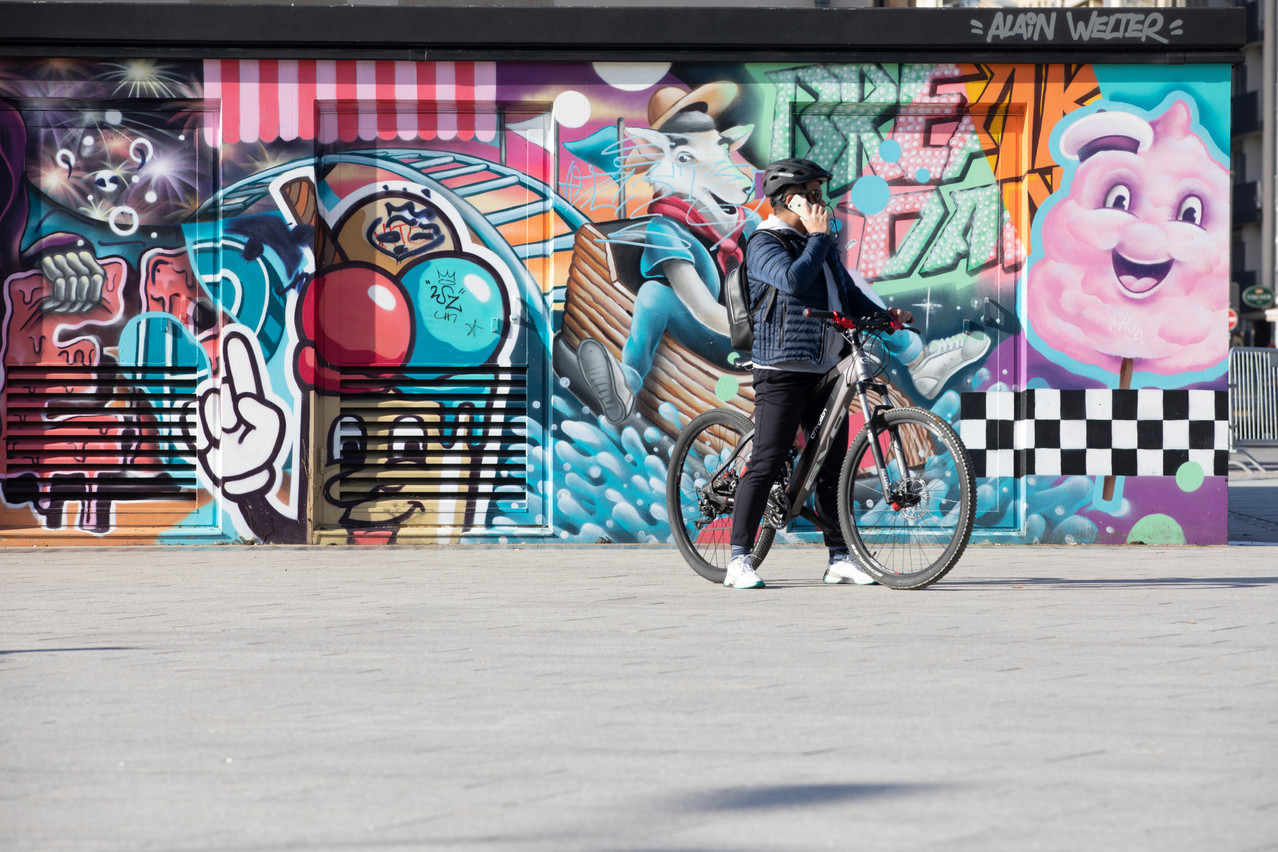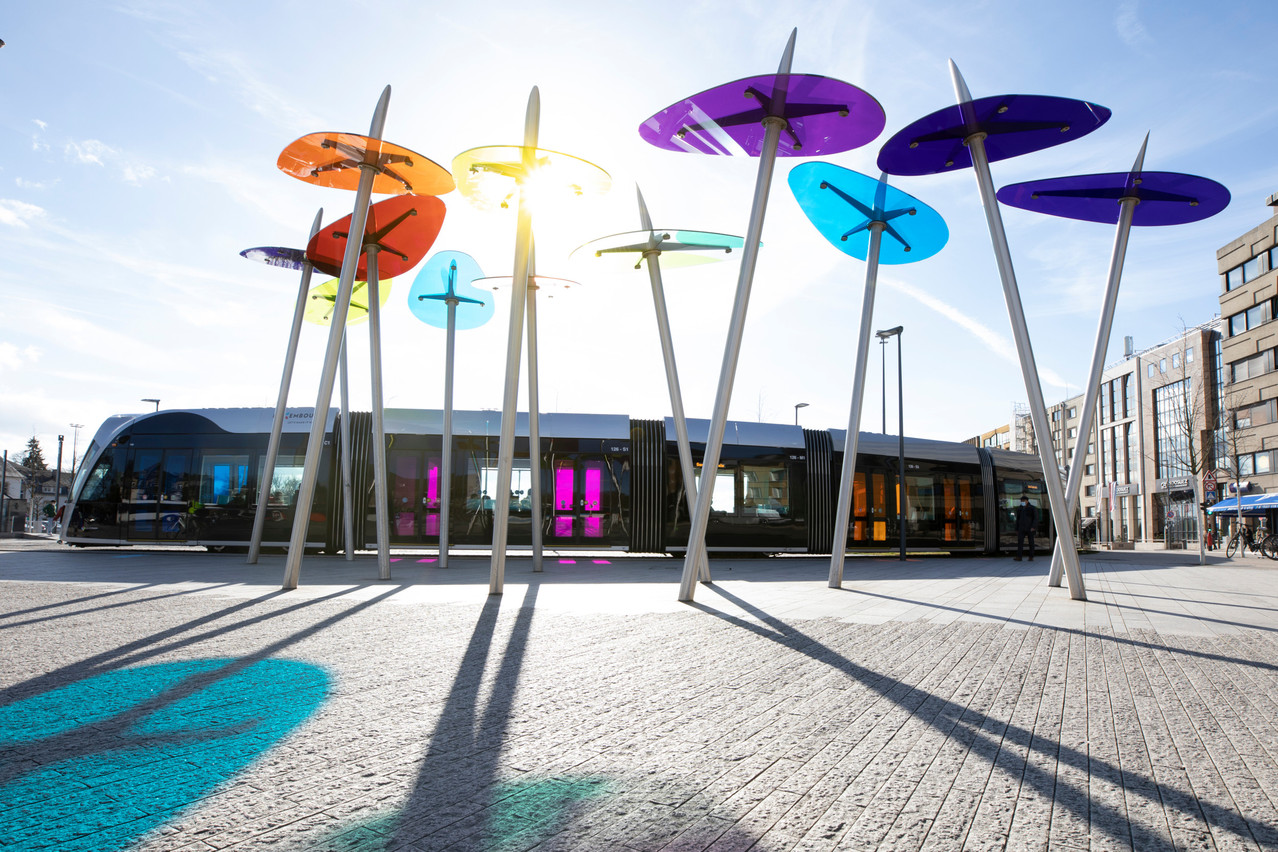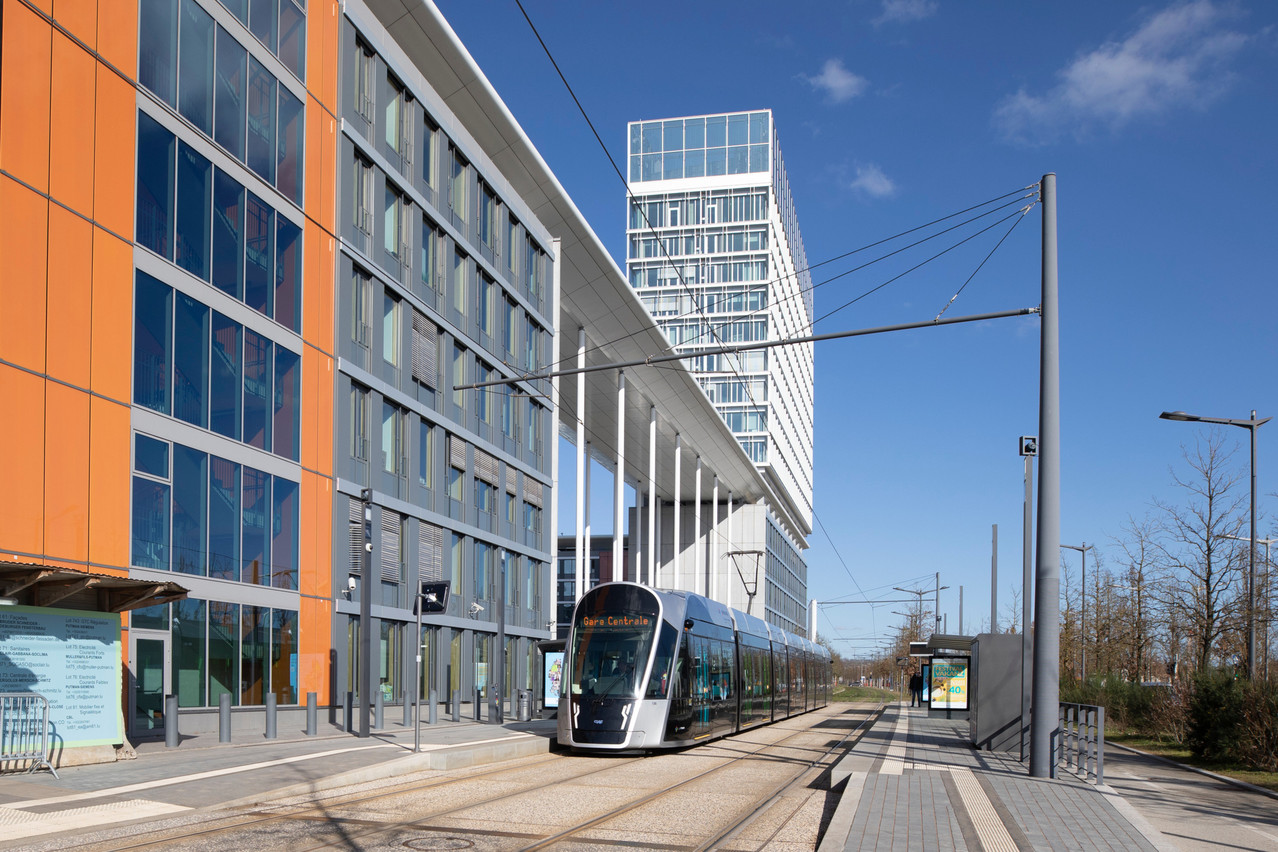The European Parliament secretariat
Sited on a square flying 28 flags of the union--those of the 27 member states and of the European Union--the secretariat of the European Parliament gave its name to the sixth tram stop on the line.
Stretching over several metres along Avenue J.F. Kennedy is the current building site for the extension and upgrade of the western part of the Konrad Adenauer 2 site. This work is necessary in order to bring together the EP’s 3,000 employees--currently spread across various departments within Luxembourg City--on a single site offering a surface area of 200,000m2. The work began in 2020 and should be completed in 2023.
The Robert Schuman monument
The tram now leaves the Kirchberg and crosses the Grande-Duchesse Charlotte bridge into the city.
Following the Grand Théâtre on the right, it passes by to the Robert Schuman monument. Look up and you will see its three steel beams. These are divided into six points, each symbolising one of the six founding member states of the European Coal and Steel Community--Belgium, Federal Germany, France, Italy, the Netherlands and Luxembourg--of which Robert Schuman was the initiator, as indicated by the inscription at the foot of the beams, engraved on a concrete base.

The Robert Schuman monument is situated between the Red Bridge and the Place du Glacis, geographically close to Clausen, the district where Robert Schuman was born. (Photo: Guy Wolff/Maison Moderne)
The Robert Schuman monument, erected on the initiative of the Luxembourg council of the European Movement, was inaugurated in 1966 and designed by the Luxembourg architect Robert Lentz.
The tagged transformers on the Place du Glacis
As the tram approaches the Theater stop, passengers can see a line of colourful graffiti. These are the work of Alain Welter, a Luxembourg artist-illustrator. Commissioned by Creos and the City of Luxembourg to decorate one of the electric transformers located on the Place du Glacis, Welter has created a colourful and festive fresco personifying a candyfloss, an ice cream or a packet of popcorn, a tribute to the Schueberfouer--the annual fun fair that takes place on the place du Glacis at the end of August.

Alain Welter's tags cover one of the transformers on the Place du Glacis, visible from the tram before reaching the Theater station. (Photo: Guy Wolff/Maison Moderne)
The Place du Glacis also has another electric transformer covered in graffiti, designed by Luxembourg artist Stick and visible on board the tram at the Faïencerie stop.
The Xavier Brasseur fountain
At the Theater stop, a historical element attracts attention, on the opposite side of the road. It is a fountain engraved with the name of Xavier Brasseur (1865-1912), a Luxembourg lawyer and politician.
A native of Esch-sur-Alzette, Brasseur worked for the development of his town (the creation of a district court and an industrial and commercial school) and is considered the initiator of the tram project in the south of the country. Indeed, the Minettstram linked various towns in the canton (Esch, Dudelange, Differdange and Oberkorn) between 1927 and 1956.

The Xavier Brasseur fountain is located on the boulevard Emmanuel Servais, near the Theater station. (Photo: Guy Wolff/Maison Moderne)
Beyond the borders of Esch, the socialist was a member of parliament in 1902 and budget rapporteur in 1905 and 1909. His main struggle was the introduction of universal suffrage, which was introduced in 1919, after his death.
"An Urban Watercolour", by Michel Leonardi
Leaving the Theater station, tall, sloping metal poles topped by colourful transparent discs can be spotted as the trams turns the corner onto allée Scheffer. This is the Urban Watercolour installation by Michel Leonardi, the artist Luxtram called upon to decorate this small area adjacent to the Place du Glacis.
The colours Leonard chose are the same as those used on the tram doors, providing a certain harmony between the urban art and the carriages.

The Urban Watercolour installation by Michel Leonardi. (Photo: Guy Wolff/Maison Moderne)
A similar installation can also be seen in Liège, in neighbouring Belgian, at the Avroy Bridge crossroads.
Sobriety and fantasy, history and modernity... the tram ride is also a journey rich in anecdotes through different eras and styles. Our visit continues in a the third installment, when we reach the Central Station...
This story was first published in French on . It has been translated and edited for Delano.
